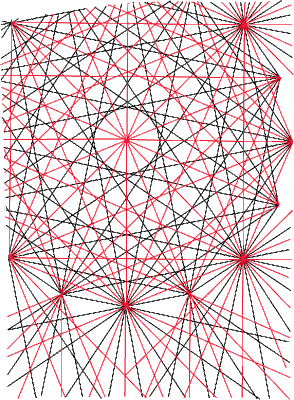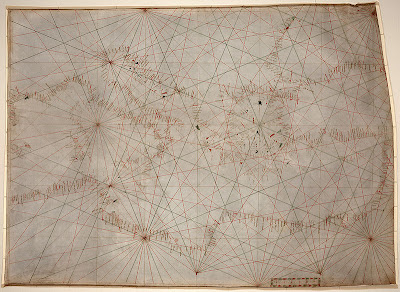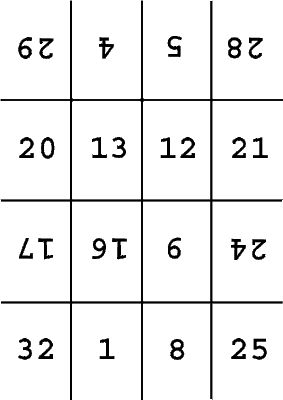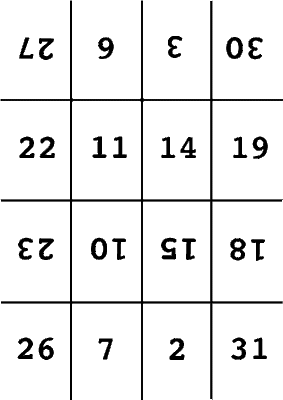 We would perhaps find the answer in the tactile palpation where the questioner and questioned are closer, and of which, after all, the palpation of the eye is a remarkable variant. How does it happen that I give to my hands, in particular, that degree, that rate, and that direction of movement that are capable of making me feel the textures of the sleek and the rough? Between the exploration and what it will teach me, between my movements and what I touch, there must exist some relationship by principle, some kinship, according to which they are not only, like the pseudopods of the amoeba, vague and ephemeral deformations of the corporeal space, but the initiation to and opening upon a tactile world. This can happen only if my hand, while it is felt from within, is also accessible from without, itself tangible, for my other hand, for example, if it takes its place among the things it touches, is in a sense one of them, opens finally upon a tangible being of which it is also a part. Through this crisscrossing within it of the touching and the tangible, its own movements incorporate themselves into the universe they interrogate, are recorded on the same map as it; the two systems are applied upon one other, as the two halves of an orange. It is no different for the vision - except, it is said, that here the exploration and the information it gathers do not belong 'to the same sense." But this delimitation of the senses is crude. Already in the 'touch' we have found three distinct experiences which subtend one another, three dimensions which overlap but are distinct: a touching of the sleek and of the rough, a touching of the things - a passive sentiment of the body and of its space - and finally a veritable touching of the touch, when my right hand touches my left hand while it is palpating the things, where the 'touching subject' passes over to the rank of the touched, descends into the things, such that touch is formed in the midst of the world and as it were in the things.Merleau-Ponty - The intertwining, the chiasmreversibility - inside out / outside in / walter benjamin's reversed stocking / the intimate relation of the historical and metaphysical
We would perhaps find the answer in the tactile palpation where the questioner and questioned are closer, and of which, after all, the palpation of the eye is a remarkable variant. How does it happen that I give to my hands, in particular, that degree, that rate, and that direction of movement that are capable of making me feel the textures of the sleek and the rough? Between the exploration and what it will teach me, between my movements and what I touch, there must exist some relationship by principle, some kinship, according to which they are not only, like the pseudopods of the amoeba, vague and ephemeral deformations of the corporeal space, but the initiation to and opening upon a tactile world. This can happen only if my hand, while it is felt from within, is also accessible from without, itself tangible, for my other hand, for example, if it takes its place among the things it touches, is in a sense one of them, opens finally upon a tangible being of which it is also a part. Through this crisscrossing within it of the touching and the tangible, its own movements incorporate themselves into the universe they interrogate, are recorded on the same map as it; the two systems are applied upon one other, as the two halves of an orange. It is no different for the vision - except, it is said, that here the exploration and the information it gathers do not belong 'to the same sense." But this delimitation of the senses is crude. Already in the 'touch' we have found three distinct experiences which subtend one another, three dimensions which overlap but are distinct: a touching of the sleek and of the rough, a touching of the things - a passive sentiment of the body and of its space - and finally a veritable touching of the touch, when my right hand touches my left hand while it is palpating the things, where the 'touching subject' passes over to the rank of the touched, descends into the things, such that touch is formed in the midst of the world and as it were in the things.Merleau-Ponty - The intertwining, the chiasmreversibility - inside out / outside in / walter benjamin's reversed stocking / the intimate relation of the historical and metaphysical (
umgekehrter Strumpf) (
Gesammelte Schriften vol. I/3 918)
the rolled up stocking doughnutunrolledthe handkerchief mouse --- a torus rolled…the rolled-up stocking, the kind children find in a laundry basket and like to play with. If one asks what is “in” it and unrolls the stocking to reveal its “contents,” there is--precisely--nothing.
The concept of origin (
Ursprung), however, has little to do with genealogy or “progressive becoming” (8). It has more to do with “becoming and vanishing,” with springing forth, as the word suggests, out of a whirlpool composed of both processes. The interpretive game Jacobs plays, therefore, is both a language game and a game of transformation. Like the stocking, that “sign for Proust’s dream world,” interpretation takes place in some marginal territory between dream and waking, self and surroundings, sacred and profane, and--as we saw above--becoming and vanishing. As a figure for involuntary memory, the stocking promises what it cannot deliver: “access to a non-existent plenitude,
The rolled up stocking is both a sign and a content for itself and yet it has a third dimension. When rolled up it is a bag that appears to contain something. When children reach into it they find the bag empty. The game, which the children know only too well before hand, is to reveal this empty nature of the container. In repeatedly playing the game, the children's joy is not in finding a hidden or secret content, but in repeatedly transforming the container and the content into something else--the real stocking.
[14] Mémoire involontaire in Proust is that empty sign which never tires of repeatedly voiding itself. Like the rolled up stocking it promises "plenitude," but delivers a mere empty sign. This countless playing of the empty sign, of an apparent fullness and subsequent nothingness, in Proust acquires "the structure of...dream world" of noncoincidence to which a third element is added--the image. From an empty sign and an empty content a third thing is produced--the image, the stocking itself. Where did it come from? It came from the process of emptying of the self as sign, as presence. Thus Benjamin remarks, "Proust could not get his fill of emptying the dummy, his self, at one stroke in order to keep garnering that third thing, the image which satisfied his curiosity," and in Proust's curiosity, if we recall what Benjamin tells us, "there was something of the detective. It is here that we can actually apprehend the real meaning of the "deeper resemblance" that prefigures noncoincidence of the dream world. The relationship between sign and meaning is that of similarity, resemblance (as in the case of the rolled up stocking as a sign for a bag or a container containing a "present" as meaning, which we know is as empty as the sign itself) and not a play of identity. The nonidentical world of dreams and Proust's mémoire involontaire share the children's penchant for reaching in the stocking endlessly for the production of the image. The structural or primordial relationship between the self and its image, between life and literature, is primarily an issue of resemblance, of similarity, which ought not to be confused with that of identity.
The Intertwining of Remembering and Forgetting in Walter Benjamin



 i think this will be a print
i think this will be a print









